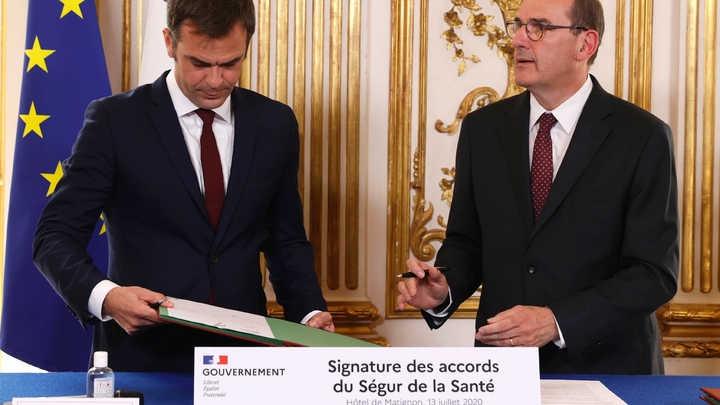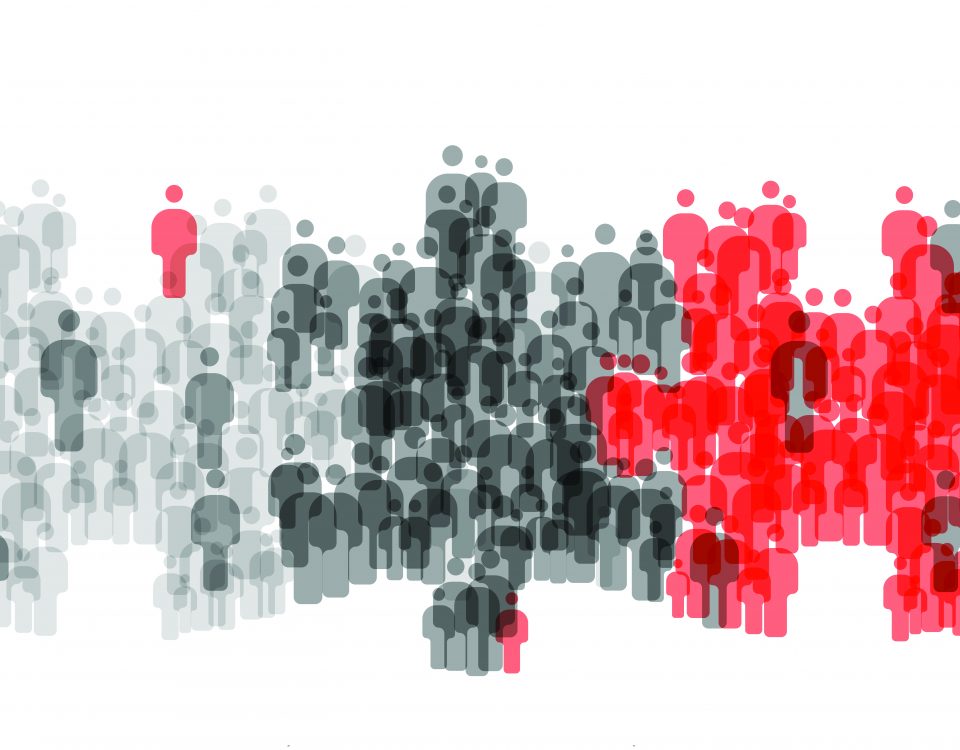


Between Drugs and Food: Inventing Microbiota Medicine
12 December 2021
The Agrofood Industry and Its Political Activities
12 December 2021By Guillaume Levrier, Centre for Political Science
Lulu and Nana just turned three years old. The announcement of their birth during the second Human Genome Editing Summit in November 2018 went viral. The images of researcher He Jiankui explaining how his lab had used CRISPR to make the twins genetically resistant to HIV remain in the memories of millions. The procedure was not perfect. Even if it had been optimally designed and executed, it would have conferred resistance to only one of the virus variants. Moreover, the data presented at the conference showed that it did not work equally well for the two twins. He presented one as partially resistant, and the other as a ‘mosaic’: that is, as having some cells that block the virus and others that do not.
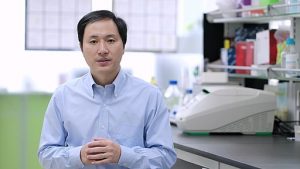
Chinese biomedical researcher Dr. Jiankui He. Wikimedia, CC BY 3.0
While the circumstances that led to their birth remain unclear, the researcher He Jiankui was sentenced to three years in prison and 3 million yuan for illegal medical practices. TheChinese legal framework has recently been updated with special provisions to prevent this type of experiment from happening again. In France, the bioethics law passed on August 2, 2021, confirms the status quo of provisions on editing the germinal genome, i.e. reproductive cells. In the United States, a budget rider renewed each year provides that no funds allocated to the Food and Drug Administrations (FDA) may be used to even consider any proposal to begin clinical trials involving the reimplantation of genetically modified human embryos.
Finding Legislative Cover Amid a Storm
These provisions systematically extend a pre-existing framework rather than rise up to the specific problems that such techniques create. In a sense, it is akin to a politician sticking Post-its around the edges of an umbrella to expand its surface as a storm brews. Yet genetic engineering processes that enable the design and use of programmable nucleases are not so new. Granted, it was just in 2020 that Emmanuelle Charpentier and Jennifer Doudna’s work on CRISPR-Cas9 was awarded the Nobel Prize in Chemistry. But, to take just one example, it is since the 1980s that research teams such as those of Bernard Dujon or Maria Jasin have been working on what is now called ‘genome editing’. And ideation around biotechnological eugenics that might shape the molecular basis of heredity date back to well before the discovery of DNA.

Aldous Huxley. 1932
Among the literary pillars undergirding thess collective imaginaries, Aldous Huxley’s Brave New World is seminal. It was already possible in 1932 to evoke the political taboos around the technologisation of procreation and the culture of its transcendence. These fundamental questions remain. How should a political community define “the living” at a time when technology enables targeting specific areas of the genome and inducing mutations that will modify traits? Can we define the boundaries of what is human and what is not in the body, at cellular and genome levels? And if so, how?
Assuming Ungovernability
Philosophers and bioethicists have been asking these questions for almost half a century. But each school of thought has its own way of articulating its principles and concepts. This is the case, for example, with the question of the ‘dignity’ of the human genome: where some theologians ask the question of human control over creation, Marxist philosophers may find a new terrain of alienation and entrenched inequalities. These concepts are often fundamental or ‘existential’ principles in the eyes of their proponents – ‘units’ that are given and cannot be acted upon, even at the margins. This type of gap impedes political responses. The biotechnologisation of life is an area where compromises have thus far proven to be virtually unattainable.
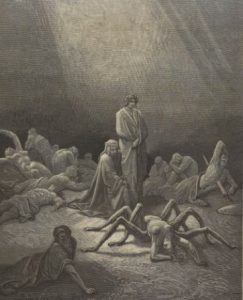
Arachne in Purgatory by Dante Alighieri, with drawings by Gustave Doré, source Gallica
CRISPR has compounded the difficulty of translating biotechnological advances into policy issues that can be addressed by democratic legislative, executive, and judicial institutions. Parliamentarians, ministers, and judges who take up the issue do so with great caution. They present their decisions as motivated by the liabilities of previous controversies, such as GMOs or pre-implantation diagnostics. In so doing, they produce discourses that from the outset limit their remit to the categorisation of known mutations that have already been reached by other means. It becomes a matter of classifying soya bean varieties according to which gene was edited, or of deciding which hereditary genetic disease could benefit from treatment versus another. Asking these questions without finding consensus answers blocks the nuclease policy process. As a result, it is impossible to formulate the stakes of the power to modify the DNA of living organisms. Yet it is in this ability to ‘make life’ that some of the essence of sovereign power lies.
We call this paradox an ‘expectation of ungovernability’. By multiplying questions about the use of genetic engineering techniques over which compromise is unattainable, those in positions of political power in effect place these questions outside of their remit and of what they consider to be ‘governable’. Parliamentarians and ministers alike are reluctant to categorise living things, and sometimes leave it to judges to rule as a last resort.
This is what happened, for example, when the Council of State(1)The French administrative law supreme court known as Conseil d’État referred a preliminary question to the Court of Justice of the European Union concerning the categorisation of plants modified by nucleases. Contrary to the opinions of the European Food Safety Authority and the General Counsel, the judges ruled that these plants did not qualify for the exemption regime granted to plants modified by random mutagenesis (mutation breeding), which are not classified as genetically modified (GMO) under Directive 2001/18 (like those resulting from transgenesis). Judges often end up in the uncomfortable position of having to extend a legal regime that was not designed for the subject at hand until legislators take it up. By positioning themselves in relation to a previous status quo, all these actors do not formulate the key problem: the implications of public authorities’ use of this power over living organisms. They never raise the question of what the State – whose purpose is to wield sovereign power – could do with this capacity to make a given population with a given gene live or die.
From Possible to Real
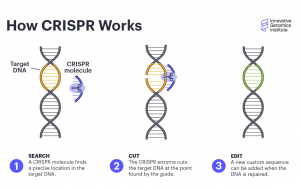
Credits: Innovative Genomics Institute, UC Berkeley.
This assumed ungovernability is materialised in governments’ discourse claiming that their remit does not extend as far as defining where human life begins and ends. It consequently sets up a screen of sorts that separates them from the subject that they exclude from their public concerns. No one has taken it upon themselves to answer the question that American researcher Sheila Jasanoff asked in her 2005 book Designs on Nature: ‘Will continued advances in the life sciences produce a new genetic underclass, and will they simultaneously increase the state’s already immense power to define, classify, and regulate life itself?’ How can parliamentarians, ministers, and judges who design, execute, and interpret the law define where this type of genetic engineering fits in their toolbox? Now that our lives are all about PCR tests and messenger RNA vaccines, how can we leave unaddressed the question of what the State can or cannot do with CRISPR?
This nagging question continues to emphatically arise three years after the birth of the first human beings purposefully edited with nucleases. It remains unanswered thus far. Before their births, it was possible not to ask for it. This situation, which anthropologists or psychoanalysts might describe as arising from a taboo (it would be absolutely forbidden to modify the human germline genome) or denial (the power to modify the germline genome exists, but to do so on a large scale would raise so many difficult problems that it is as if it did not exist), resulted from a shattered balance. What was seen as a possible future suddenly burst into reality. Humans whose genomes were edited to improve them now inhabit the world. And there is no reason why this world should be any less theirs than ours.
Granted, prestigious international scientific and political institutions published many reports, forums, and moratorium proposals in response to these births. Of note are the moratorium proposal that Eric Lander proposed(2)Eric Lander is the former director of the Broad Institute, which hosts leading teams working on the transformation of CRISPR as a genetic engineering tool. He was named director of Joe Biden’s Office of Science, which has been elevated to cabinet rank., Benjamin Hurlbut’s global observatory project(3)Benjamin Hurlbut, Sheila Jasanoff, and Krishanu Saha are leading this project for a Science and Technology Studies (STS) special on genome editing., the report from the American and British Academies of Sciences, and the WHO report published in July 2021. Each of these proposals has its strengths and weaknesses.
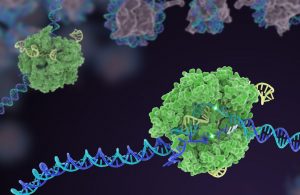
Cas9. Credits: Innovative Genomics Institute, UC Berkeley.
The experts who participated in their drafting had to reach consensus among themselves on subjects that are both highly technical and highly ambiguous. How to measure the deleterious impact of nucleases latching onto sequences that are close to but different from their target? How can we determine the value of deactivating a gene considered pathogenic in a germline context when some academies of science refuse to study the question? And, most importantly, how can we ensure a follow-up on the recommendations made?
The answers to these questions also remain out of reach. None of these documents proposes a mechanism that does not depend on the goodwill of the players involved. None of them clearly raises the question of the checks and balances needed if, like DNA sequencing, genome editing were added to the State’s toolbox to organise, ‘the administration of bodies and calculating management of life’. Scientists cannot be blamed for refusing to take on the role created by a political vacuum. The fact remains that scientists have been left to wield a power with implications that have not been sufficiently considered in public life: to go off-piste as an avalanche moves ever closer to unleashing.
A doctoral candidate at CEVIPOF, Guillaume Levrier is preparing a thesis entitled ‘The institutional challenges of genome editing’ under the supervision of Virginie Tournay. Its objective is to analyse the decision-making mechanisms leading to public policies on genome editing.
Notes
| ↑1 | The French administrative law supreme court known as Conseil d’État |
|---|---|
| ↑2 | Eric Lander is the former director of the Broad Institute, which hosts leading teams working on the transformation of CRISPR as a genetic engineering tool. He was named director of Joe Biden’s Office of Science, which has been elevated to cabinet rank. |
| ↑3 | Benjamin Hurlbut, Sheila Jasanoff, and Krishanu Saha are leading this project for a Science and Technology Studies (STS) special on genome editing. |



